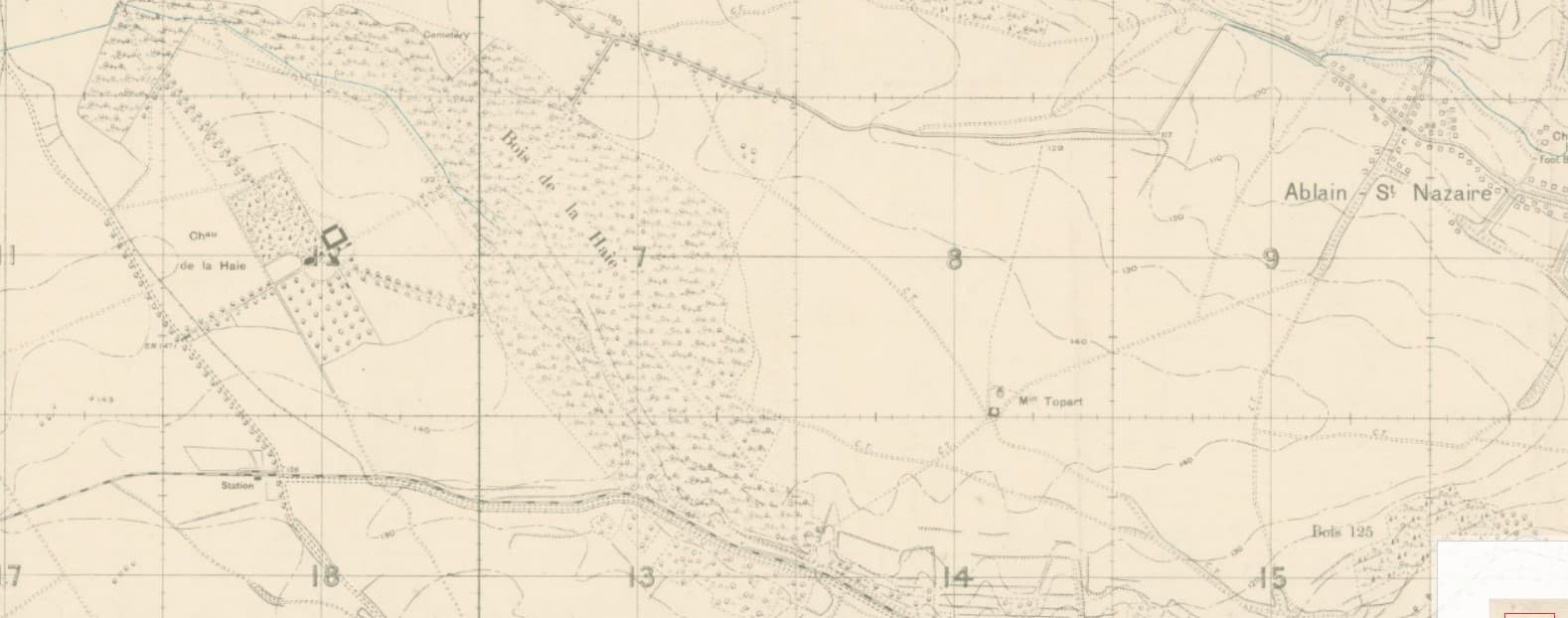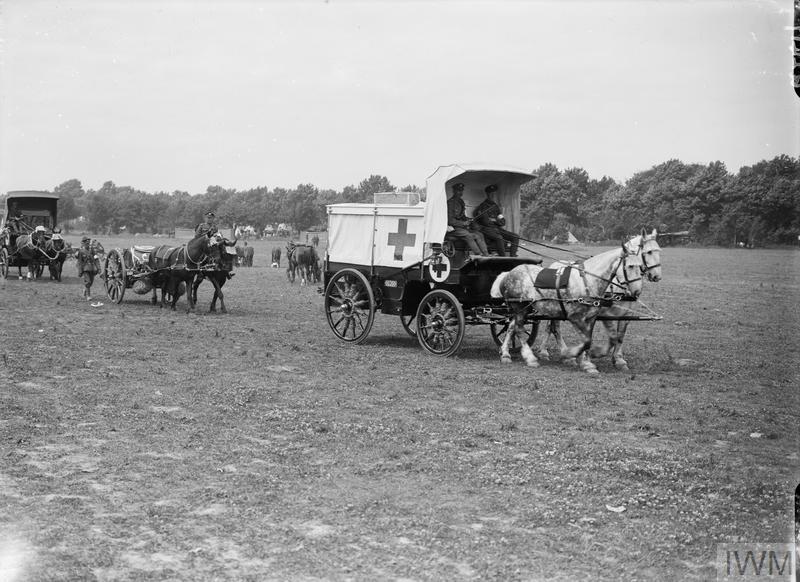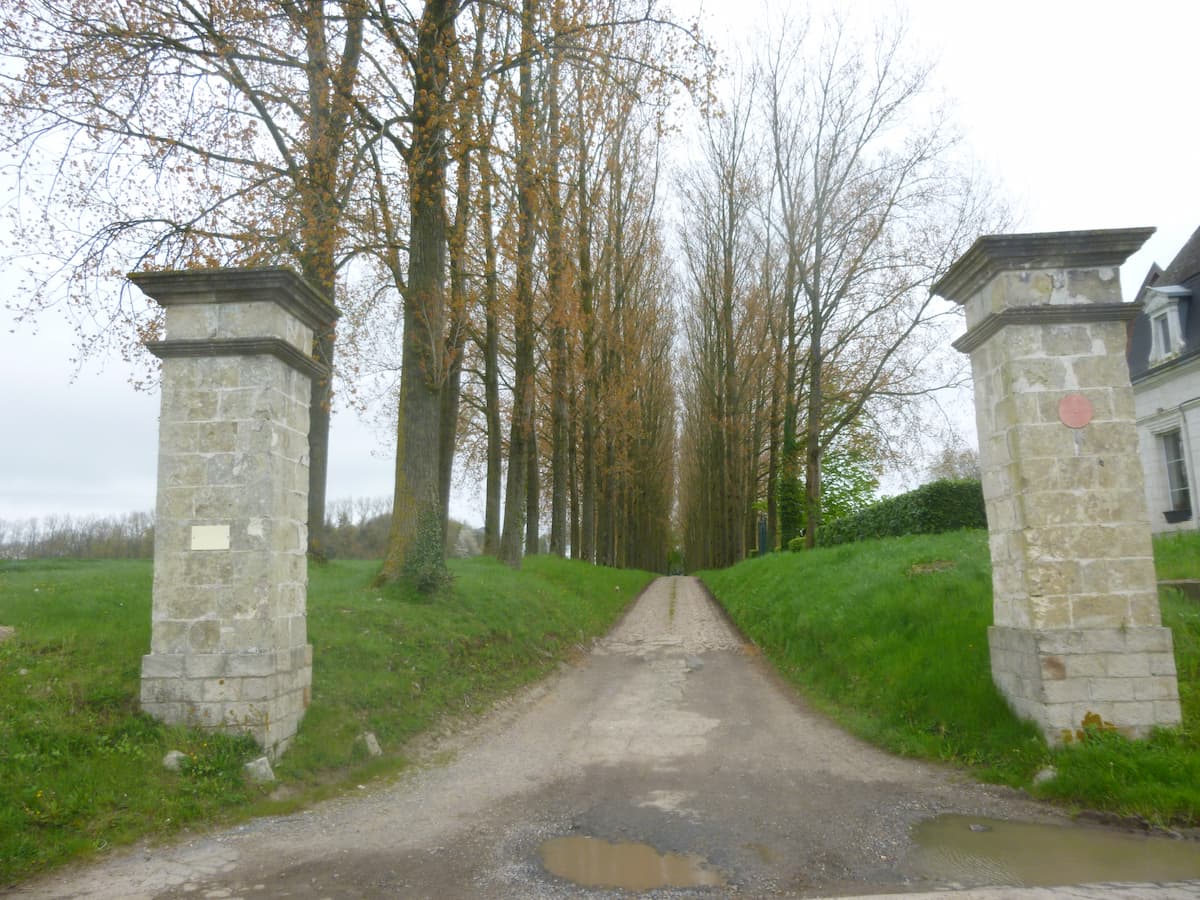Rest and Respite in the Woods
Poem from the Archive
After three weeks of heavy toil under fire during the opening stages of the Somme offensive, the 9th Seaforths were relieved in Montauban on 20th July 1916 and moved to tents and billets around the Chateau de la Haie, 6 miles north-east of Arras and close to the village of Carency. Whilst only 30 miles to the north of Montauban as the crow flies, the 100 mile circuitous route avoiding the front line areas took 11 days by route march and troop train before they were able to settle in to their new quarters for the remainder of the summer.

The Chateau had been the French 70th Infantry Division HQ under its commander General Emile Fayolle until March 1916 when the British 3rd Army took over the Arras sector. The Bois de la Haie is a large wooded area that lies adjacent to the Chateau and would have made a perfect camping ground for the battalion “Our tents all set out neath the trees’ leafy shade” as Zem Zem puts it. The flat, open meadow surrounding the Chateau was used as a sports field for events and competitions that were organised to maintain morale and showcase the Army’s capabilities.
LINES TO LA BOIS DE LA HAIE (an Impression)
The Bois de la Haie shall I ever remember
Our tents all set out neath the trees’ leafy shade
The orderly ranks of the regiment assembled,
A vista of canvas through the wide glade.
The columns of smoke that arose in the morning,
Diffused thro’ the wood by the slow moving breeze
To a lambent mist turned by the rays of the sunshine,
Were barred and streaked by the shadow of trees.
The pelting of rain from the overcast heavens,
Which damps all your clothes as it soaks through your tent.
The moisture arising in clouds round your bivvy
The horrible language to which you give vent.
The blaze of the sun on the neighbouring parkland,
The stamping of horses for fear of the clegg,
The buzzing of flies and the pipe of mosquitoes,
The ceratopogon’s fierce bite on your leg.
The long dreary march to the far Zouave Valley,
The duck boards that break and entangle your toes,
The hours of hard work and the cutting of corpses,
One hand on your pickaxe and one on your nose.
Convivial evenings in pleasant society,
The numerous songs on the loud gramophone,
The long journeys back in the Stygian darkness,
The barging about into bushes alone.
The fields full of thistles by peasants deserted,
The villages ruined and razed to the ground,
The Vimy Ridge held by the Bosch in his thousands,
The aeroplane dud with its nauseous sound.
Oh, Boie de la Haie I shall never forget thee,
But thy name will be never distasteful to me,
There are numerous places I fancy much better
But many much worse we shall probably see.
Zem Zem (undated)
The camp was only five miles from the front line trenches on Vimy Ridge, in sight of the Germans whose trenches were on the top of the ridge and well within range of their artillery. Being amongst the trees would have hidden the tented camp from German artillery observers although the Chateau would have been an obvious target. However, the French and Germans had adopted a ‘live and let live’ approach in this sector so the Chateau had been left unscathed and continued to be left alone whilst the 9th Seaforths were encamped there.
Being so close to the front line, pioneer work parties were sent out daily to clear, repair or dig new trenches, returning to camp in the evening. The French had lost thousands of men attempting to take Vimy Ridge the previous year and the remains of many of them were uncovered whilst clearing trenches. The work was hard and unpleasant, as Zem Zem captures in his usual understated way:
The long dreary march to the far Zouave Valley,
The duck boards that break and entangle your toes,
The hours of hard work and the cutting of corpses,
One hand on your pickaxe and one on your nose
Whilst it was unpleasant, the lack of enemy activity made it reasonably safe work and the battalion’s casualties during August were relatively light – only seven men slightly wounded and none killed. Both officers and men would have enjoyed being in a semi-permanent camp and having evenings at leisure, even if the nightly entertainment was limited to a gramophone player.
The Battalion remained at Bois de la Haie until 10th September when they relocated to billets further back from the front. The 4th Canadian Division took over the chateau in March 1917 as they prepared for the Vimy Ridge battle, and the 9th Seaforths never returned. It burnt down in the 1950s and was rebuilt, although the main gates and tree lined track leading up to the buildings remain as Zem Zem would have seen it.
Although undated, Zem Zem clearly wrote his Lines to the Bois de la Haie during or soon after the Battalion’s brief stay there. Like much of his poetry, it captures the beauty of a place without glossing over the discomforts. Over a hundred years later, anyone who has been on a summer camping holiday can relate to the inherent tranquillity of the sun cutting through an early morning mist one moment whilst dodging mosquitoes, midges and cleggs the next.
By Craig Durham, Volunteer at The Highlanders’ Museum (Queen’s Own Highlanders Collection)



